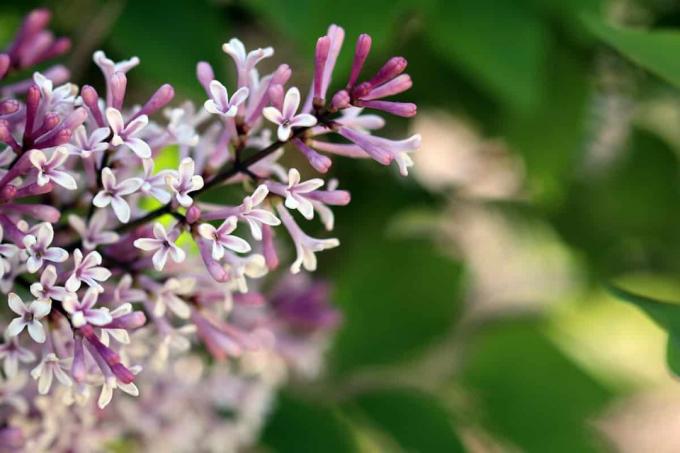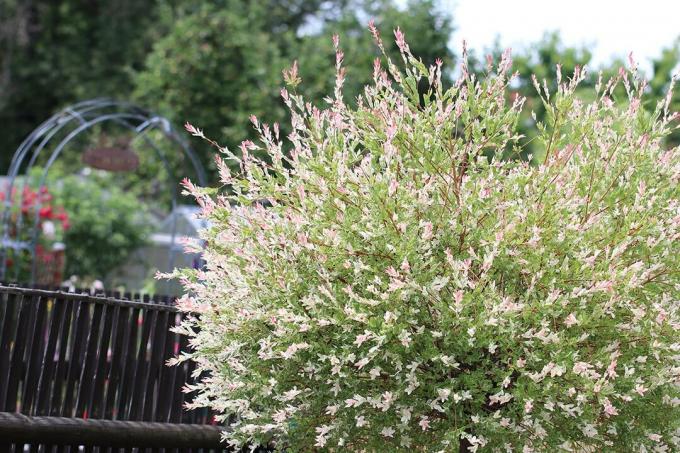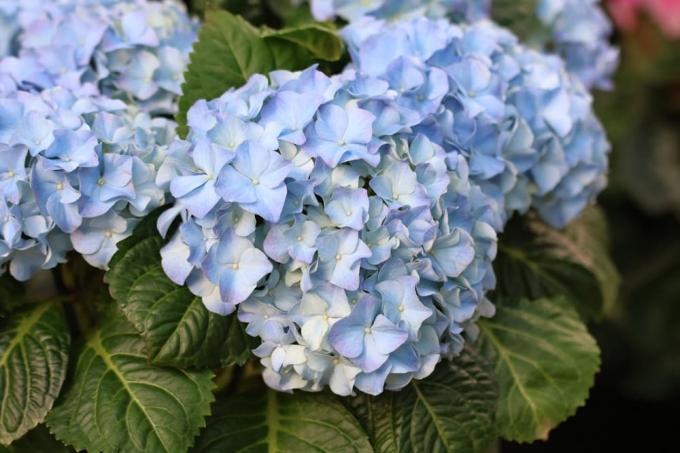

Table of contents
- Which ornamental wine should it be?
- Plant ornamental vine
- Cutting ornamental wine
Numerous historic houses are admired for their beautiful vegetal facade decoration in autumn. Zierwein is responsible for this, which could also decorate your facade.
Which ornamental wine should it be?
The grapevine family (Vitaceae) includes about 700 species that grow in different concentrations all over the world. The grapevine family is further divided into subfamilies, of which three genera produce species that are traded as ornamental plants and that you might encounter as ornamental wine. These are the vines (Vitis), the virgin vines (Parthenocissus) and the mock vines (ampelopsis). There are significant differences between the varieties, some varieties have e.g. B. Adhesive discs, others not.
If you have one ornamental wine planting, choosing the right variety for the intended purpose is almost more important than any thought about care and pruning. In addition to the type of climbing and the adhesiveness, there are other arguments for or against one or the other ornamental wine. Some species can grow very high, others do not exceed 3 or 4 meters, some are spread over the facade, others seek a straight path upwards. There are species that develop trunks of considerable diameter, while others become one
trellis adjust better. Some ornamental wines can suffer from harsh winters, and last but not least is deciding whether to harvest grapes.Plant ornamental vine
Once the right ornamental wine has been found, the rest of the treatment is no longer very problematic. All types of ornamental wine are very much the same in terms of their needs: they feel comfortable in a water-permeable, preferably loamy soil that has alkaline or neutral pH values. Ornamental vine tolerates shade and sun, if you have chosen a fruit-bearing species, a location on a south or south-east side will help you get a bounty. The autumn colors can also be a bit more magnificent in a very sunny location.
Ornamental vines can be planted any time between late autumn and spring when the temperatures are mild enough, of course the soil temperature must not be in the freezing range. If you plant the ornamental vine on a house wall, you are usually dealing with soil that is not very nutrient-rich, which should therefore be prepared for the planting of the ornamental vine. To do this, dig a large planting hole (at least 50 x 50 x 50 cm) and fill it with well-moist clay soil inside This area is now the planting pit for the ornamental vine, which are best planted as well-rooted pots should.
If the vine is planted on the house wall, you should keep a distance of about 50 cm and use the stick at an angle to the house wall, where the plant is then directed. For example, when working on the facade, you can remove the vine along with the trellis and place it on the floor. If in doubt, give the roots a little more space when planting and sprinkle very carefully the soil above it, the roots of young plants are quite delicate and should not be damaged become. After that, you can rake in some mature compost on the surface, but it should not come into contact with the roots, which could then burn.
If the vine once properly established, it requires little maintenance. Usually it grows pretty much all by itself if it is to get a nutrient-poor location on a house wall, you could use a soil analysis to find out for sure what the nutrient supply is like is. A lack of nutrients can cause poor growth performance, in which case the vines are happy about a monthly fertilization from May to July. A complete fertilizer with a high magnesium content is recommended for the ornamental wine, which works most quickly if it is applied in liquid form.
Cutting ornamental wine
The young wine is trained from the beginning, in the first year it is about building a strong trunk. For this purpose, only a few strong side shoots are left standing during the growth phase, the others can simply be snapped off. Once a strong trunk has developed, you should continue to make sure that the ornamental wine does not develop too many side shoots in the first few years. You should also remove most of the grapes, the ornamental wine should now put as much energy as possible into the constructive growth. Cutting out during the vegetation phase ensures that the wound is closed in good time before the hibernation. When this “bottom floor” of the cane has developed a strong trunk about an inch thick, begin winter pruning in February or March:
- You cut back the woody shoots to the desired trunk height, about a meter is recommended.
- It will now in turn develop side shoots, from which you can choose two shoots that come from the lowermost eyes at the level of the first crossbar or the first horizontal rope of the monkey bars grow.
- These are allowed to stand and grow straight up, all other shoots are snapped off. These two shoots build up the first floor, they will be planted on the side branches of the trellis placed.
- Only when the ornamental vine has fairly well filled this first tier with vigorous growth, build a second tier just like the first, and so on.
- Overall, the more the ornamental wine is cut back, the more it will grow, but the berries will be fewer.
Some advantages of facade greening with ornamental wine only have an effect on the facade, e.g. B. the aspect of additional thermal insulation and that the facade remains dry. You can also use other advantages of designing with climbing plants on the balcony or in the garden: ornamental wine can provide privacy and reduce noise, bind dust and cool in the heat. Ornamental wine has a positive effect on the mood. Also on that balcony you can harvest grapes. Or you grow the ornamental wine in a bucket on the terrace, where it serves all these purposes on a trellis, but can also create artistic figures on the trellis.
 garden editorial
garden editorial I write about everything that interests me in my garden.
Learn more about ornamental trees

Shell cypress, Chamaecyparis obtusa: 10 care tips
The clam cypress, which originated in Japan, is one of the most popular evergreen garden plants in this country. The 10 most important tips for caring for conifers have been compiled for you here.

Dwarf lilac: 9 tips for care and pruning
The dwarf lilac impresses with its magnificent and fragrant flowers, which at the same time form an ideal retreat for native insects. The nine most important tips for caring for and especially cutting mini lilacs are summarized here for you.

Flamingo Tree: Care and Pruning | flamingo pasture
The flamingo willow (Salix integra 'Hakuro Nishiki'), better known as the harlequin willow, is less noticeable with its inconspicuous flowers than with its colorful leaves. Its crown with the white-pink-green shoots draws everyone's attention, whether as a shrub or as a standard tree.

23 evergreen, hardy & fast growing shrubs
Evergreen and hardy shrubs are ideal for adding color to garden beds, patios and balconies in winter. Fast-growing specimens are particularly in demand. The 23 most popular shrubs can be found in the home garden guide.

The basics of hydrangea care
Hydrangeas provide a real bloom in the garden or on the balcony, as long as they are cared for professionally. Read here how best to do this.

Rhododendron location: 6 important criteria
Rhododendrons are known for their sea of flowers, which, depending on the variety, unfolds its full splendor between March and June. However, the plants only develop the numerous flowers if the location meets their requirements. Rhododendrons are extremely picky when it comes to location.



